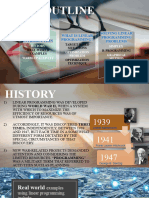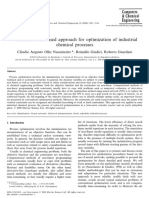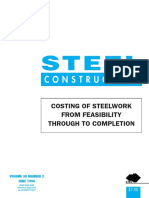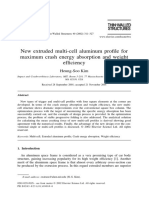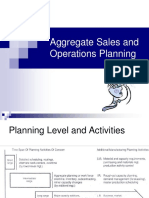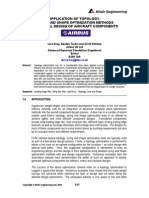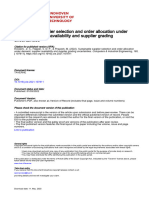0% found this document useful (0 votes)
64 views11 pagesLinear Programming (Graphical Method) : March 2015
The document provides information on solving linear programming problems graphically using two variables.
1. Graphical methods can be used to solve linear programming problems with two variables by plotting the constraint equations on a graph to identify the feasible region. Corner points of the feasible region are then identified and the objective function is plotted to determine optimal values.
2. There are three main methods for solving graphical problems: the general graphical method, corner point solution, and computer solution method. The corner point solution takes advantage of the convex nature of feasible regions and objective functions to simplify the solution process.
3. Examples demonstrate solving small 2-variable linear programming problems graphically by identifying constraints, plotting the feasible region, and determining optimal corner
Uploaded by
Indah RiyadiCopyright
© © All Rights Reserved
We take content rights seriously. If you suspect this is your content, claim it here.
Available Formats
Download as PDF, TXT or read online on Scribd
0% found this document useful (0 votes)
64 views11 pagesLinear Programming (Graphical Method) : March 2015
The document provides information on solving linear programming problems graphically using two variables.
1. Graphical methods can be used to solve linear programming problems with two variables by plotting the constraint equations on a graph to identify the feasible region. Corner points of the feasible region are then identified and the objective function is plotted to determine optimal values.
2. There are three main methods for solving graphical problems: the general graphical method, corner point solution, and computer solution method. The corner point solution takes advantage of the convex nature of feasible regions and objective functions to simplify the solution process.
3. Examples demonstrate solving small 2-variable linear programming problems graphically by identifying constraints, plotting the feasible region, and determining optimal corner
Uploaded by
Indah RiyadiCopyright
© © All Rights Reserved
We take content rights seriously. If you suspect this is your content, claim it here.
Available Formats
Download as PDF, TXT or read online on Scribd
/ 11










































